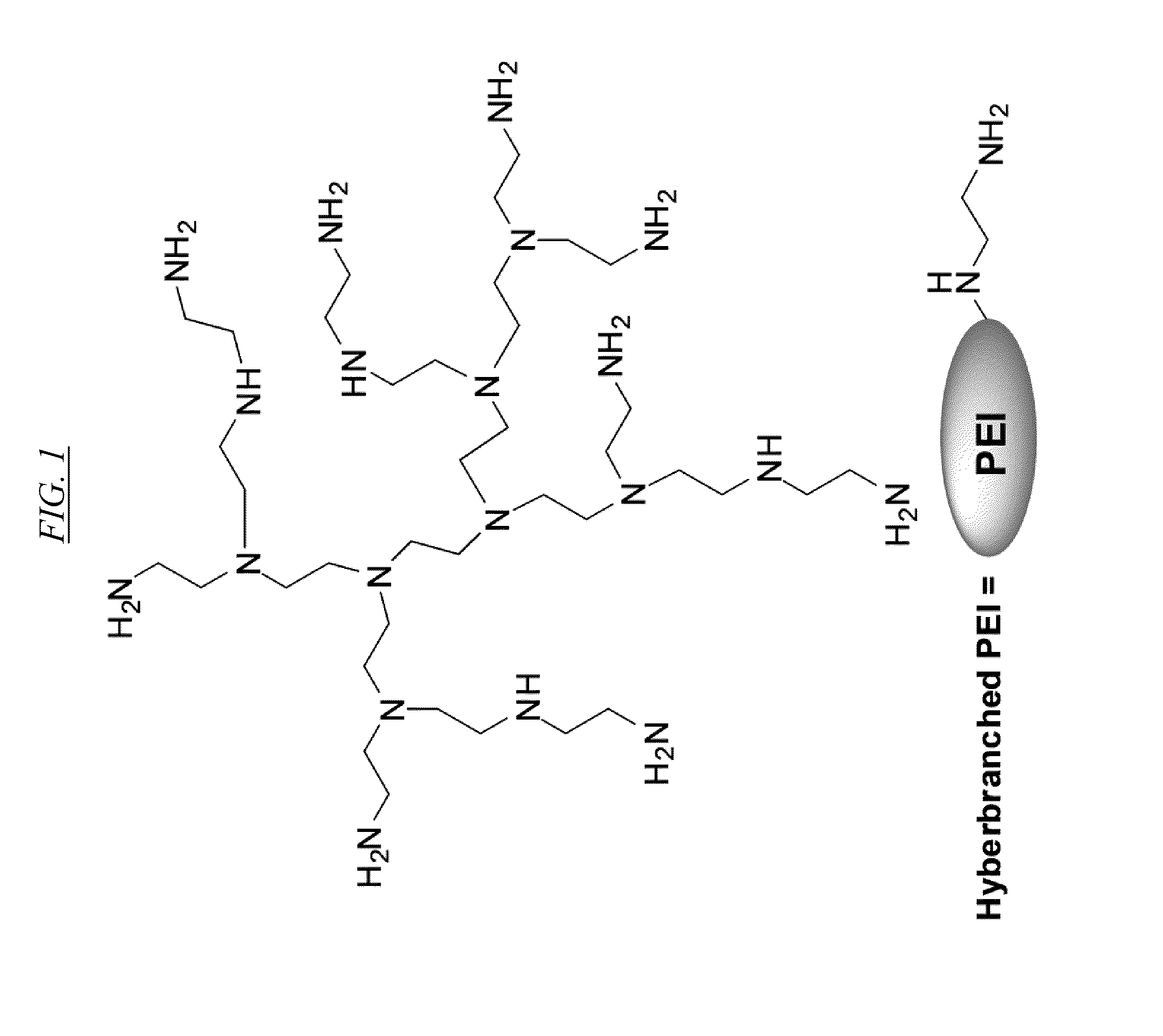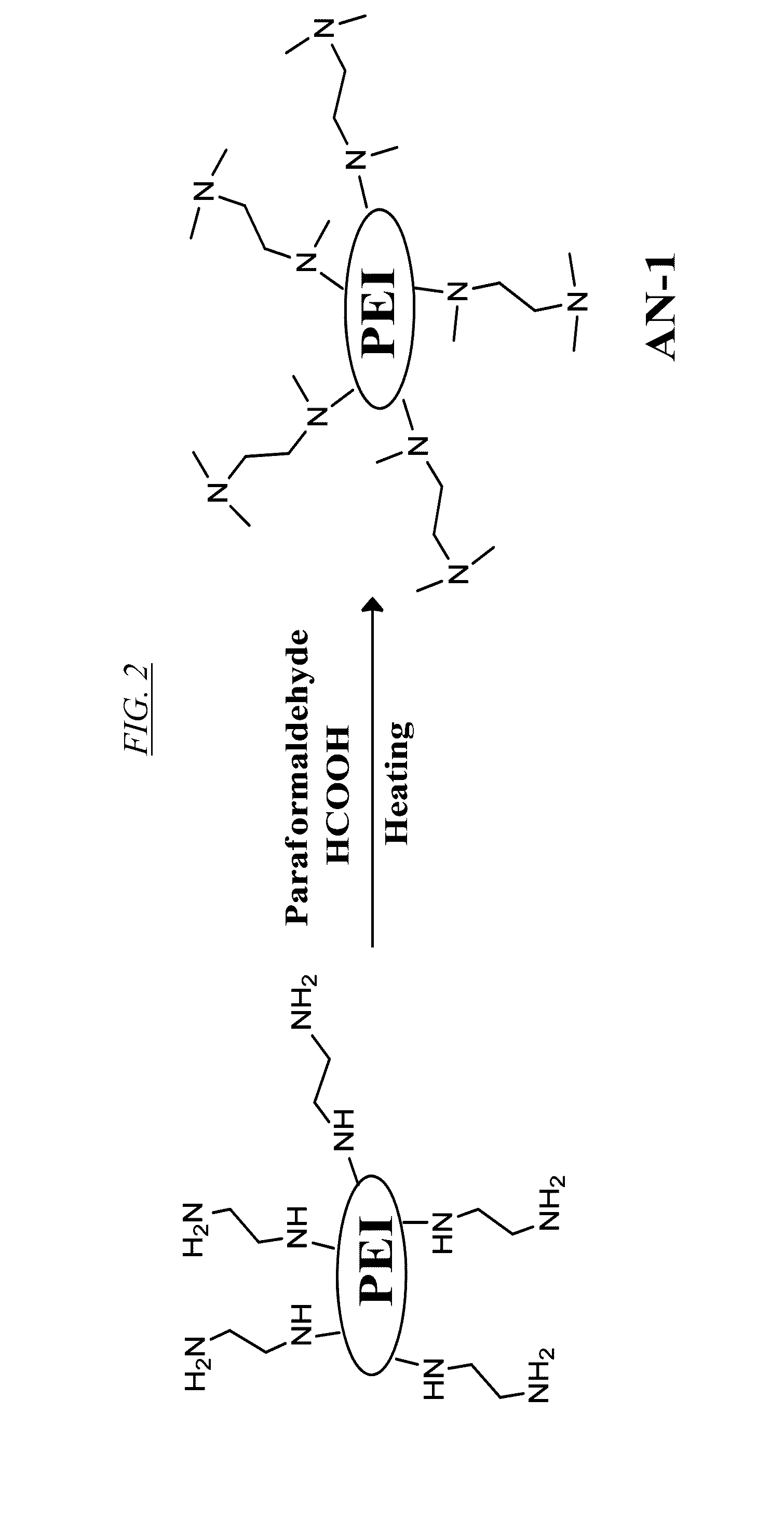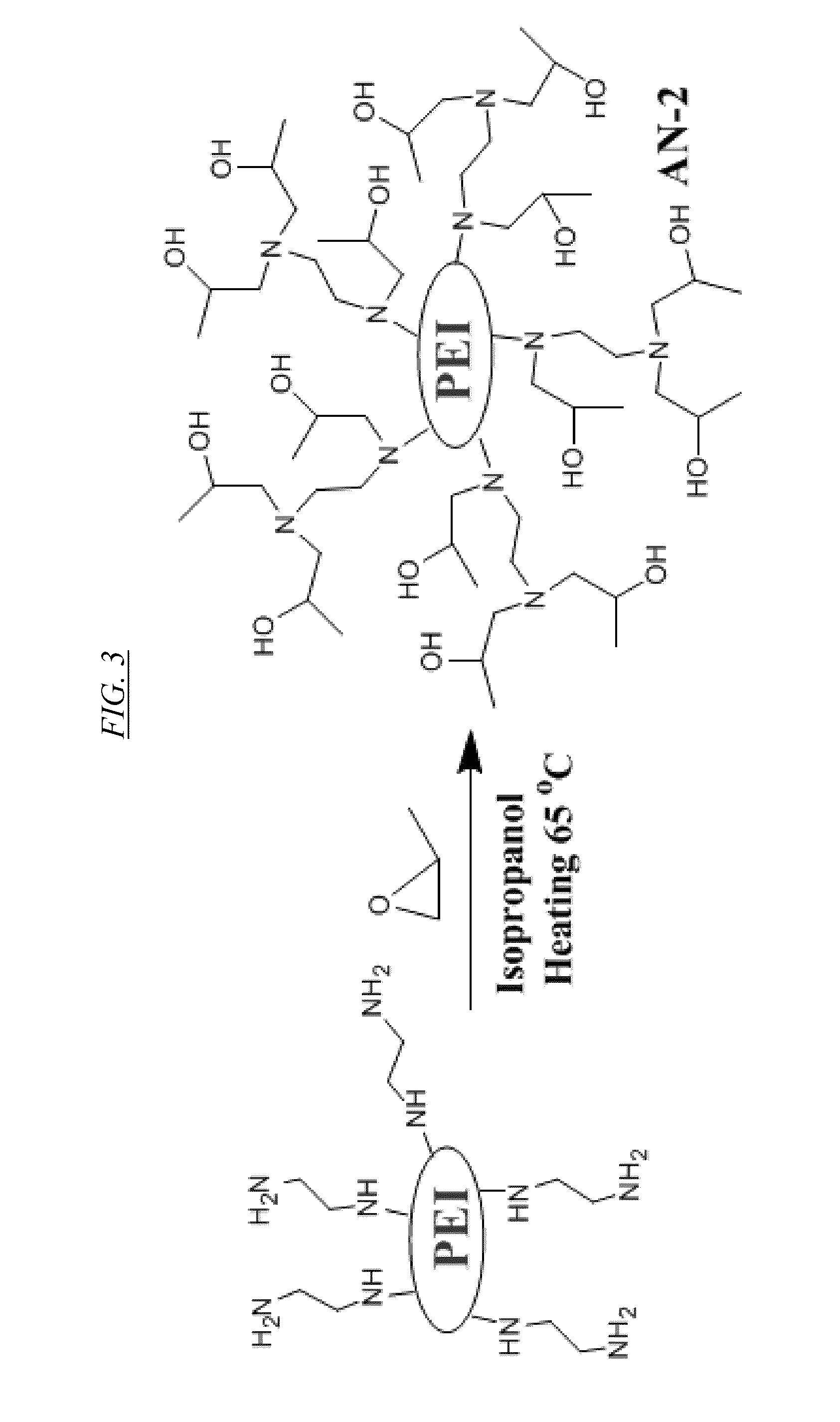Soluble anion exchangers from hyperbranched macromolecules
a macromolecule and soluble anion exchange technology, applied in the field of branched macromolecules, can solve the problems of limited binding capacity/selectivity of bromide, environmental impact, and emerging availability of clean water
- Summary
- Abstract
- Description
- Claims
- Application Information
AI Technical Summary
Benefits of technology
Problems solved by technology
Method used
Image
Examples
Embodiment Construction
[0050]Various example embodiments of the present inventions are described herein in the context of filtering or separating aqueous solutions.
[0051]Those of ordinary skill in the art will understand that the following detailed description is illustrative only and is not intended to be in any way limiting. Other embodiments of the present inventions will readily suggest themselves to such skilled persons having the benefit of this disclosure, in light of what is known in the relevant arts, the provision and operation of information systems for such use, and other related areas. Reference will now be made in detail to exemplary implementations of the present inventions as illustrated in the accompanying drawings.
[0052]In the interest of clarity, not all of the routine features of the exemplary implementations described herein are shown and described. It will of course, be appreciated that in the development of any such actual implementation, numerous implementation-specific decisions m...
PUM
| Property | Measurement | Unit |
|---|---|---|
| pressure | aaaaa | aaaaa |
| temperature | aaaaa | aaaaa |
| pH | aaaaa | aaaaa |
Abstract
Description
Claims
Application Information
 Login to View More
Login to View More - R&D
- Intellectual Property
- Life Sciences
- Materials
- Tech Scout
- Unparalleled Data Quality
- Higher Quality Content
- 60% Fewer Hallucinations
Browse by: Latest US Patents, China's latest patents, Technical Efficacy Thesaurus, Application Domain, Technology Topic, Popular Technical Reports.
© 2025 PatSnap. All rights reserved.Legal|Privacy policy|Modern Slavery Act Transparency Statement|Sitemap|About US| Contact US: help@patsnap.com



